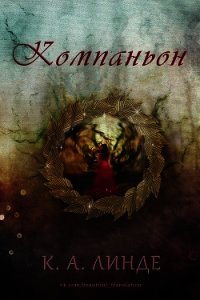Здоровый сон – счастливый ребенок - Вайсблут Марк (онлайн книги бесплатно полные TXT) 📗
Настроение и активность
Beltramini, A. U., and Hertzog, M. E. (1983). Sleep and bedtime behaviour in preschool-aged children. Pediatrics, 71, 153–158.
Dement, W. C., and Carskadon, M. A. (1982). Current perspectives on daytime sleepiness: The issues. Sleep, 5 (Suppl. 2), S56 – S66.
Dixon, K. N., Monroe, L. J., and Jakim, S. (1981). Insomniac children. Sleep, 4, 313–318.
Fibiger, W., Singer, G., Miller, A. J., Armstrong, S., and Datar, M. (1984). Cortisol and catecholamine changes as functions of time-of-day and self-reported mood. Neuroscience Biobehavioural Reviews, 8, 523–530.
Gaillard, J. M. (1985). Neurochemical regulation of the states of alertness. Annals of Clinical Research, 17, 175–184.
Gunner, M. R., Malone, S., Vance, G., and Fisch, R. O. (1985). Coping with aversive stimulation in the neonatal period: Quiet sleep and plasma cortisol levels during recovery from circumcision. Child Development, 56, 824–834.
Harrison, G. A. (1985). Stress, catecholamines, and sleep. Aviation, Space and Environmental Medicine, 56, 651–653.
Hauri, P., and Olmstead, E. (1980). Childhood-onset insomnia. Sleep, 3, 59–65.
Hicks, R. A., and Pellegrini, R. J. (1977). Anxiety levels of short and long sleepers. Psychological Reports, 41, 569–570.
Johs, M. W., Gay, T. J. A., Masterton, J. P., and Bruce, D. W. (1971). Relationship between sleep habits, adrenocortical activity and personality. Psychosomatic Medicine, 33, 499–508.
Kales, A., Bixler, E. O., Vela-Bueno, A., Cadieux, R. J., Soldatos, C. R., and Kales, J. D. (1984). Biopsychobehavioural correlates of insomnia: Part III. Polygraphic findings of sleep difficulty and their relationship to psychopathology. International Journal of Neuroscience, 23, 43–56.
Lucey, D. R., Hauri, P., and Snyder, M. L. (1981). The wakeful ‘Type A’ student. International Journal of Psychosomatic Research, 101, 333–337.
Price, V. A., Coates, T. J., Thoresen, C. E., and Grinstead, O. A. (1978). Prevalence and correlates of poor sleep among adolescents. American Journal of Diseases of Children, 132, 583–586.
Simonds, J. F., and Parraga, H. (1982). Prevalence of sleep disorders and sleep behaviours in children and adolescents. Journal of the American Academy of Child Psychiatry, 4, 383–388.
Sundell, C. E. (1922). Sleeplessness in infants. Practitioner, 109, 89–92.
Tan, T. L., Kales, J. D., Kales, A., Soldatos, C. R., and Bixler, E. O. (1984). Biopsychobehavioural correlates of insomnia: Part IV. Diagnosis based on DSM III. American Journal of Psychiatry, 141, 357–362.
Чрезмерная сонливостьв дневное время
Hoddes, E., Zarcone, V., Smythe, H., Phillips, R., and Dement, W. C. (1973). Quantification of sleepiness: A new approach. Psychophysiology, 10, 431–436.
Stepanski, E., Lamphere, J., Badia, P., Zorick, F., and Roth, T. (1984). Sleep fragmentation and daytime sleepiness. Sleep, 7, 18–26.
Ночные пробуждения, трудности с засыпанием
Coulter, D. L., and Allen, R. J. (1982). Benign neonatal sleep myoclonus. Archives of Neurology, 39, 191–192. Earls, F. (1980). Prevalence of behaviour problems in 3-year-old children. Archives of General Psychiatry, 37, 1153–1157.
Fukumoto, M., Muchozuki, N., Tekeishi, M., Nomura, Y., and Segawa, M. (1981). Studies of body movements during night sleep in infancy. Brain and Development, 3, 37–43.
Karacan, I., Wolff, S. M., Williams, R. L., Hurscl, C. J., and Webb, W. B. (1968). The effects of fever on sleep and dream patterns. Psychosomatics, 9, 331–339.
Oster, J., and Nelson, A. (1974). Growing pains: A clinical investigation of a school problem. Acta Paediatrica Scandinavia, 61, 329–334.
Radbill, S. X. (1965). Teething in fact and fancy. Bulletin of the History of Medicine, 39, 339–345.
Richman, N. (1981). A community survey of characteristics of 1– to 2-year-olds with sleep disruption. American Academy of Child Psychiatry, 20, 281–291.
Tasanen, A. (1969). General and local effects of the eruption of deciduous teeth. Annales de Paediatrac Fenniae, 14 (Suppl. 29).
Weissbluth, M. (1982). Modification of sleep schedule with reduction of night waking: A case report. Sleep, 5, 262–266.
Weissbluth, M., Christoffel, K. K., and Davis, A. T. (1984). Treatment of infantile colic with dicyclomine hydrochloride. Journal of Pediatrics, 104, 951–955.
Weissbluth, M., Davis, A. T., and Poncher, J. (1984). Night waking in 4– to 8-month-old infants. Journal of Pediatrics, 104, 477–480.
Глава 4. Сон, чрезмерная нервозность / коликии темперамент
Aldrich, C. A., Sung, C., and Knop, C. (1945). The crying of newly born babies: Part II. The individual phase. Journal of Pediatrics, 27, 89–96.
Barr, R. G. (1989). Feeding and temperament as determinants of early infant crying / fussing behaviour. Pediatrics, 84, 14–521.
Bates, J. E., Viken, R. J., Alexander, D. B., Beyers, J., and Stockton, S. (2002). Sleep and adjustment in preschool children: Sleep diary reports by mothers relate to behavior reports by teachers. Child Development, 73, 62–74.
Blum, N. J., Taubman, B., Tretina, L., and Heyward, R. Y. (2002). Maternal ratings of infant intensity and distractibility. Relationship with crying during the second month of life. Archives Pediatrics and Adolescent Medicine, 156, 286–290.
Boon, W. H. (1982). The crying baby. Journal of the Singapore Paediatric Society, 24, 145–147.
Brazelton, T. B. (1962). Crying in infancy. Pediatrics, 29, 579–588.
Breslow, L. (1957). A clinical approach to infantile colic: A review of 90 cases. Journal of Pediatrics, 50, 196–206.
Canivet, C., Jakobsson, I., and Hagander, B. (2000). Infantile colic. Follow-up at four years of age: Still more ‘emotional’. Acta Paediat, 89, 13–17.
Carey, W. B. (1972). Clinical application of infant temperament measurements. Journal of Pediatrics, 81, 823–828.
Carey, W. B. (1985). Temperament and increased weight gain in infants. Journal of Developmental and Behavioral Pediatrics, 3, 128–131.
Carey, W. B., and McDevitt, S. C. (1978). Revision of the infant temperament questionnaire. Pediatrics, 61, 735–739.
Clifford, T. J., Campbell, M., Speechley, K. N., and Gorodzinsky, F. (2002). Sequelae of infant colic. Evidence of transient infant distress and absence of lasting effects on maternal mental health. Archives of Pediatric and Adolescent Medicine, 15, 1183–1188.
Clifford, T. J., Campbell, M. K., Speechley, K. N., and Gorodozinsky, F. (2002). Infant colic. Empirical evidence of the absence of an association with source of early infant nutrition. Archives of Pediatric and Adolescent Medicine, 156, 1123–1128.
Collins, D. D., Scoggin, C. H., Zwillich, C. W., and Welf, J. U. (1978). Hereditary aspects of decreased hypoxic response. Journal of Clinical Investigations, 62, 104–110.
Crockenberg, S. B., and Smith, P. (1982). Antecedents of motherinfant interaction and infant-irritability in the first three months of life. Infant Behavior and Development, 5, 105–119.
DeVries, M. (1984). Temperament and infant mortality among the Masai of East Africa. American Journal of Psychiatry, 141, 1189–1194.
Dunst, C. J., and Lingerfelt, B. (1985). Maternal ratings of temperament and operant learning in 2– to 3-month-old infants. Child Development, 56, 555–563.
Emde, R. N., Gaensbauer, T. J., and Harman, P. J. (1976). Emotional expression in infancy: A biobehavioural study. Psychological Issues, 10, 1–200.




